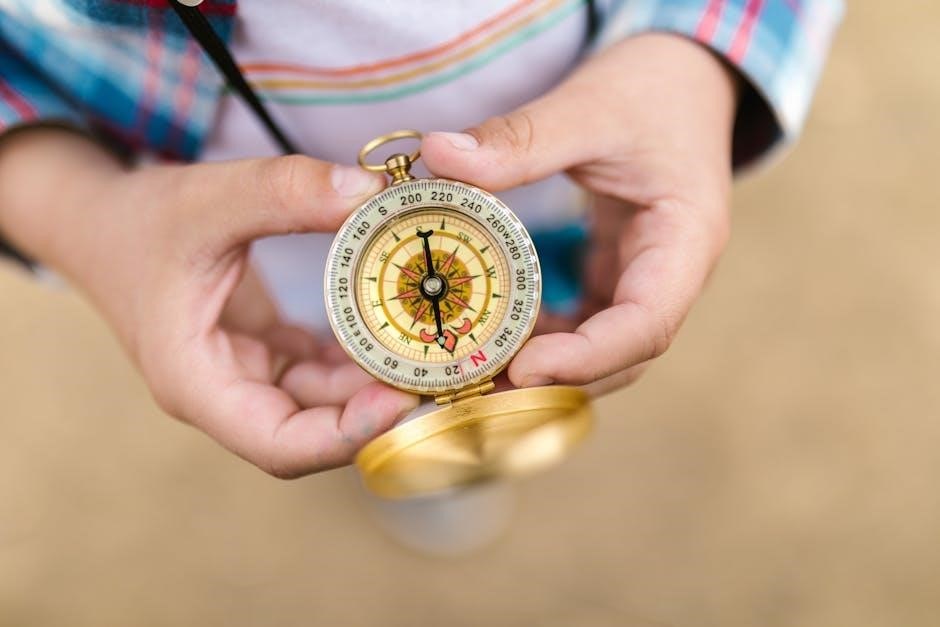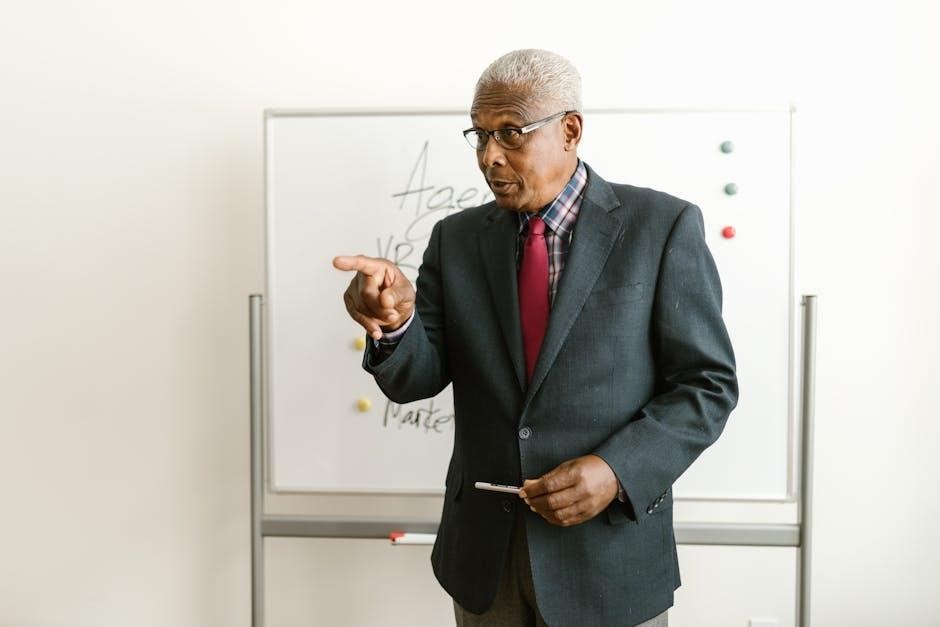Understanding the Science of Aging

Dr․ Michael Greger’s How Not to Age explores biological processes like cellular energy and DNA repair, revealing how free radicals damage tissues over time, accelerating aging․
Biological Processes That Drive Aging
In How Not to Age, Dr․ Michael Greger delves into the core biological processes that drive aging, such as cellular energy production and DNA repair mechanisms․ As we age, cells produce less energy, and DNA repair becomes less efficient, leading to accumulated damage․ Free radicals, unstable molecules generated during metabolism, play a significant role in damaging DNA, proteins, and tissues over time․ Greger explains how these processes contribute to frailty, disease susceptibility, and cognitive decline․ By understanding these mechanisms, individuals can adopt evidence-based lifestyle changes to slow aging and maintain vitality․ The book emphasizes the importance of addressing these biological processes to promote healthy aging and reduce the risk of age-related diseases․
The Role of Free Radicals in Aging
Dr․ Michael Greger highlights free radicals as key contributors to aging in How Not to Age․ These unstable molecules, produced during cellular respiration, cause oxidative stress by damaging DNA, proteins, and tissues․ Over time, this damage accumulates, leading to tissue degradation and increased risk of age-related diseases․ Free radicals disrupt cellular functions and accelerate the aging process, contributing to conditions like wrinkles, arthritis, and cognitive decline․ Greger emphasizes the importance of antioxidants in neutralizing free radicals and protecting cells from oxidative damage; By incorporating antioxidant-rich foods and reducing oxidative stress, individuals can slow aging and maintain youthful cellular function, as outlined in his evidence-based approach to healthy aging․
How DNA Repair Mechanisms Slow Down with Age
As we age, DNA repair mechanisms become less efficient, leading to the accumulation of genetic damage․ Dr․ Michael Greger explains in How Not to Age that this decline impairs cellular function and increases the risk of age-related diseases․ DNA repair systems, such as base excision and nucleotide excision repair, are crucial for maintaining genomic stability․ However, with age, these processes slow down, allowing mutations and epigenetic changes to accumulate․ This contributes to cellular senescence, inflammation, and tissue dysfunction․ Greger highlights the importance of lifestyle interventions, such as a diet rich in antioxidants and regular physical activity, to support DNA repair and mitigate the effects of aging․ By addressing these mechanisms, individuals can promote healthier aging and reduce the likelihood of chronic diseases․

Diet and Nutrition in Anti-Aging
Diet plays a crucial role in anti-aging by providing essential nutrients and antioxidants that combat oxidative stress and inflammation, promoting cellular health and longevity․
The Importance of Antioxidant-Rich Foods
Antioxidant-rich foods are vital in combating oxidative stress, a key driver of aging․ They neutralize free radicals, protecting cells from damage and inflammation․ Berries, leafy greens, and nuts are excellent sources of antioxidants like vitamin C, vitamin E, and polyphenols․ These nutrients help maintain cellular health, reducing the risk of age-related diseases such as heart disease and cognitive decline․ Incorporating antioxidant-rich foods into your diet can slow aging processes and promote overall well-being․
Plant-Based Diets and Their Impact on Longevity
Plant-based diets are strongly linked to longevity, as they reduce inflammation and oxidative stress․ Diets rich in fruits, vegetables, and whole grains provide essential nutrients and antioxidants․ These foods support cellular health and lower the risk of chronic diseases․ Studies show that plant-based eaters often have longer telomeres, a biomarker of aging, and a lower risk of age-related conditions․ Dr․ Michael Greger emphasizes that avoiding animal products can slow aging by minimizing harmful compounds like advanced glycation end products․ A well-planned plant-based diet is a powerful tool for promoting health and extending lifespan․
Dr․ Michael Greger’s Recommendations for an Anti-Aging Diet
Dr․ Michael Greger advocates for a diet rich in antioxidants, fiber, and essential nutrients to combat aging․ He emphasizes the importance of consuming plant-based foods, including berries, leafy greens, beans, and nuts, which are packed with vitamins and minerals․ Greger also recommends incorporating specific anti-aging foods like turmeric, garlic, and green tea, known for their anti-inflammatory properties․ He stresses the importance of staying hydrated and limiting processed foods, added sugars, and saturated fats․ By focusing on whole, unprocessed foods, individuals can support cellular health, reduce oxidative stress, and promote longevity․ Greger’s evidence-based approach provides a clear roadmap for making dietary choices that slow aging and enhance overall well-being․

Exercise and Physical Activity
Regular exercise is crucial for slowing aging by improving mobility, preserving muscle mass, and enhancing overall physical function, as highlighted in Dr․ Michael Greger’s research․
How Regular Exercise Slows Down Aging
Regular exercise plays a vital role in slowing down the aging process by improving cellular energy, enhancing DNA repair mechanisms, and boosting antioxidant production․ Physical activity strengthens muscles, improves mobility, and reduces the risk of age-related diseases․ Exercise promotes longevity by maintaining healthy organ function and supporting immune systems․ It also reduces oxidative stress, a key contributor to aging, by activating antioxidant defenses․ Studies show that consistent physical activity can delay the onset of age-related conditions, such as heart disease and diabetes․ By incorporating strength training and aerobic exercises, individuals can preserve muscle mass and bone density, essential for maintaining independence as they age․ Dr․ Michael Greger emphasizes that exercise is a cornerstone of anti-aging strategies, promoting overall health and well-being․
Best Exercises for Maintaining Mobility as You Age
Maintaining mobility as you age is crucial for independence and overall health․ Dr․ Michael Greger recommends incorporating exercises like yoga, Pilates, and tai chi to improve flexibility and balance․ These low-impact activities strengthen core muscles and enhance joint mobility, reducing the risk of falls․ Swimming and cycling are also excellent options, as they provide a full-body workout without stressing the joints․ Resistance training, such as light weightlifting, helps preserve muscle mass and bone density․ Regular stretching exercises can improve range of motion and prevent stiffness․ By combining these practices, individuals can maintain physical function and mobility, ensuring they stay active and healthy as they age․ Consistency is key to reaping long-term benefits and preventing age-related decline․ Incorporating these exercises into your routine can significantly enhance your quality of life․
The Role of Strength Training in Preserving Muscle Mass
Strength training is essential for preserving muscle mass, which naturally declines with age․ Dr․ Michael Greger emphasizes that resistance exercises, such as weightlifting or using resistance bands, can help maintain muscle fibers and prevent sarcopenia․ Progressive overload, gradually increasing weight or resistance, stimulates muscle growth and strength․ This not only preserves physical function but also enhances metabolic health, reducing the risk of age-related diseases like diabetes․ Incorporating strength training into your routine can improve bone density, reduce frailty, and support overall longevity․ Combining strength exercises with adequate protein intake further maximizes muscle preservation․ By prioritizing strength training, individuals can maintain muscle mass, ensuring better mobility and independence as they age․ This approach is vital for a healthy and active lifestyle in older adulthood․

Mental Health and Cognitive Function
Mental health is crucial for cognitive function as we age․ Dr․ Michael Greger highlights the importance of mental stimulation, stress management, and sleep to maintain sharp cognitive abilities and reduce the risk of age-related cognitive decline․ Engaging in activities that challenge the brain, such as puzzles or learning new skills, can help preserve cognitive function․ Additionally, social connections and a positive mindset play a significant role in overall brain health, supporting longevity and mental well-being․ Prioritizing mental health ensures a sharper mind and a more vibrant life as you age․ Strength training also contributes to better brain health by improving blood flow and reducing inflammation․
Keeping Your Mind Sharp: Strategies for Cognitive Health
Dr․ Michael Greger emphasizes that cognitive health can be preserved through various strategies․ Engaging in mentally stimulating activities, such as puzzles, learning new languages, or playing musical instruments, helps build cognitive reserve․ Regular physical exercise, particularly aerobic workouts, improves blood flow to the brain, enhancing memory and focus․ A balanced diet rich in antioxidants, vitamins, and minerals supports brain health, while social engagement and stress reduction techniques like meditation can further protect against cognitive decline․ Avoiding harmful habits such as excessive alcohol consumption and smoking also plays a crucial role in maintaining sharp mental faculties․ By adopting these practices, individuals can proactive
Managing Stress to Prevent Premature Aging
Chronic stress accelerates aging by increasing cortisol levels, which can damage cells and organs over time․ Dr․ Michael Greger highlights the importance of stress management in his book How Not to Age, emphasizing that prolonged stress leads to inflammation and oxidative stress, both of which are linked to premature aging․ Techniques such as mindfulness, meditation, and deep breathing can help mitigate these effects․ Engaging in regular physical activity and maintaining a balanced diet also play a role in reducing stress․ By incorporating these practices, individuals can effectively manage stress and slow down the biological processes that contribute to aging․ Prioritizing mental well-being is essential for maintaining a youthful and healthy body․
The Connection Between Sleep and Aging

Sleep plays a crucial role in maintaining physical and mental health as we age․ Dr․ Michael Greger’s research highlights that poor sleep quality accelerates aging by impairing cellular repair and increasing inflammation․ During sleep, the body repairs DNA, regulates hormones, and clears toxins, all of which are essential for youthful vitality․ Chronic sleep deprivation can lead to oxidative stress and premature aging․ Prioritizing sleep by maintaining a consistent schedule and creating a restful environment can help mitigate these effects․ Incorporating relaxing routines, such as reading or meditating, can enhance sleep quality and support overall health․ Addressing sleep issues is vital for slowing down the aging process and maintaining a healthy, energetic lifestyle․

Lifestyle Factors That Influence Aging
Lifestyle choices, such as smoking, excessive alcohol, and sun exposure, significantly impact aging․ These habits accelerate oxidative stress and damage, while healthier alternatives slow aging and promote longevity․
The Impact of Smoking and Alcohol on Aging
Smoking and excessive alcohol consumption accelerate aging by promoting oxidative stress and damaging cellular structures․ Smoking harms skin elasticity, leading to premature wrinkles, while alcohol depletes antioxidants, impairing liver function and increasing disease risk․ Both habits weaken the immune system, making the body more susceptible to age-related illnesses․ Dr․ Greger emphasizes that quitting smoking and moderating alcohol intake are crucial for slowing aging․ These lifestyle changes, combined with a nutrient-rich diet, can significantly reduce the risk of premature aging and chronic diseases, promoting a healthier, longer life․
How to Limit Sun Exposure for Skin Health
Chronic sun exposure is a leading cause of premature aging, causing photoaging and skin damage․ To protect your skin, wear SPF 30 or higher sunscreen daily, reapplying every two hours․ Wide-brimmed hats and protective clothing with UPF ratings can shield your skin from harmful UV rays․ Avoid sun exposure during peak hours (10 AM–4 PM) when UV rays are strongest․ Dr․ Greger highlights that consistent sun protection prevents wrinkles, dark spots, and skin cancer, preserving youthful skin texture and elasticity․ These simple practices are essential for maintaining healthy, vibrant skin as you age․

Importance of Social Connections in Healthy Aging
Social connections play a vital role in healthy aging by reducing inflammation, lowering stress levels, and providing emotional support․ Dr․ Greger emphasizes that strong relationships can help prevent cognitive decline and mental health issues like depression, which are linked to premature aging․ Engaging in social activities fosters a sense of purpose, reduces feelings of loneliness, and promotes overall well-being․ Studies show that individuals with robust social networks tend to live longer and experience fewer age-related health problems․ Nurturing friendships and staying connected with family and community are essential for maintaining both physical and mental health as you age․ Prioritizing social interactions is a powerful way to enhance longevity and quality of life․

Supplements and Vitamins for Anti-Aging
Dr․ Greger highlights vitamins like C and E, along with omega-3 fatty acids, as key antioxidants that combat free radicals and promote cellular health․ Phytoestrogens also play a role in mitigating age-related declines, though they are not a standalone solution․ Supplements should complement, not replace, a balanced diet and healthy lifestyle to maximize their anti-aging benefits and support overall longevity․
Vitamins That Support Skin Health
Vitamins C and E are essential for combatting oxidative stress, a key driver of skin aging․ Vitamin C boosts collagen production, enhancing skin elasticity, while vitamin E protects skin cells from damage․ These antioxidants neutralize free radicals, reducing wrinkles and promoting a youthful appearance․ Dr; Greger emphasizes their role in maintaining skin integrity and hydration․ Regular intake through diet or supplements can visibly improve skin health․ These vitamins work synergistically to safeguard against environmental stressors, ensuring radiant and resilient skin as we age․ Incorporating foods rich in these vitamins is a cornerstone of Dr․ Greger’s anti-aging recommendations for preserving skin vitality and overall well-being․
Supplements to Boost Energy Levels
Dr․ Michael Greger highlights specific supplements that can enhance energy levels by addressing underlying factors like nutrient deficiencies and oxidative stress․ Coenzyme Q10 (CoQ10) supports mitochondrial function, the body’s energy-producing cells, while iron supplements combat fatigue caused by anemia․ Vitamin B12 is crucial for energy metabolism, particularly in older adults, as absorption declines with age․ Omega-3 fatty acids reduce inflammation, which can sap energy, and magnesium plays a role in ATP production․ These supplements, when used appropriately, can help maintain vitality and combat age-related energy decline․ Dr․ Greger emphasizes a balanced approach, ensuring these supplements complement a healthy diet and lifestyle for optimal results․
Natural Remedies to Combat Age-Related Diseases
Dr․ Michael Greger emphasizes the role of natural remedies in mitigating age-related diseases, focusing on diet and lifestyle interventions․ Phytoestrogens, found in plant-based foods, can mimic estrogen’s benefits, reducing menopause symptoms and bone loss․ Antioxidants like polyphenols in berries and green tea neutralize free radicals, protecting cells from oxidative damage․ Omega-3 fatty acids, particularly from flaxseeds and walnuts, reduce inflammation linked to chronic diseases․ A high-fiber diet promotes gut health, essential for immune function and nutrient absorption․ Strength training and regular exercise preserve muscle mass, countering sarcopenia․ Social connections and stress reduction also play roles in preventing premature aging․ These natural approaches, supported by scientific research, offer effective ways to combat age-related diseases and promote longevity․

Monitoring and Maintaining Health as You Age
Regular health screenings and proactive monitoring of age-related changes are vital for early detection and prevention of chronic diseases, ensuring a healthier and more active lifestyle․
Regular Health Check-Ups and Screenings
Regular health check-ups are essential for maintaining health as you age, enabling early detection and prevention of chronic diseases․ Dr․ Michael Greger emphasizes the importance of screenings to identify age-related risks, such as cardiovascular issues or cognitive decline․ These check-ups help monitor key health metrics, ensuring timely interventions․ Screenings for conditions like senile asthenia and fall risks in older adults are crucial, as highlighted in various studies․ By prioritizing regular medical evaluations, individuals can address potential health problems before they escalate, promoting a longer and healthier life․ Personalized care plans, based on these screenings, play a vital role in preserving independence and quality of life during aging․
Tracking Key Health Metrics
Monitoring key health metrics is vital for maintaining vitality as you age․ Dr․ Michael Greger highlights the importance of tracking biomarkers such as blood pressure, cholesterol levels, and blood glucose to prevent age-related diseases․ Regular assessments of cardiovascular health and arterial stiffness can help identify risks early․ Additionally, keeping an eye on hemodynamic parameters ensures optimal circulation and organ function․ By staying informed about these metrics, individuals can make informed lifestyle choices, slowing down the aging process․ Consistent tracking also aids in detecting subtle changes, allowing for timely interventions to preserve physical and mental well-being․ This proactive approach is central to Dr․ Greger’s strategy for promoting longevity and maintaining health throughout the aging journey․
How to Stay Motivated on Your Anti-Aging Journey
Staying motivated on your anti-aging journey requires setting clear, achievable goals and celebrating small milestones․ Dr․ Michael Greger emphasizes the importance of adopting a mindset focused on long-term health rather than quick fixes․ Surrounding yourself with a supportive community and tracking progress can enhance motivation․ Incorporating enjoyable activities, such as preparing nutrient-rich meals from Dr․ Greger’s cookbook, can make the journey feel rewarding․ By understanding the science behind aging and the impact of lifestyle choices, individuals can feel empowered to take control of their health; Consistency and patience are key, as anti-aging efforts yield gradual but meaningful results over time․ This mindset helps maintain dedication and fosters a lifelong commitment to well-being․






























